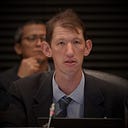What is holding back sustainable financial flows to lower middle-income countries?
At the end of April, the European Commission’s High Level Expert Group (HLEG) on scaling up sustainable finance in lower-middle-income countries (LMICs) returned their final recommendations. These build on the position that public sector funding is insufficient to fill the US$3.5 trillion of annual financing for climate and nature risks and achieving the Sustainable Development Goals (SDGs) and that private sector investment is required.
The volume of investment needed for these goals in LMICs in particular outstrips the public sector financial resources available either domestically or through international climate finance from developed countries. A large share of the international climate finance to meet climate and other sustainable development goals will need to come from private sector investors who have sufficient assets to fill the gap. However, these investors face numerous barriers that limit the flows of financing to LMICs that need it.
The European Commission’s HLEG on sustainable finance in LMICs acknowledged the gap between the current flows and what is needed and provided evaluation of several points where action could overcome them. Despite LMICs excluding China accounting for 21% of global GDP, only 4.1% of EU pension fund assets and an even smaller 1.3% of EU insurance company assets are invested in these markets.
The HLEG evaluated many explanations for the underinvestment in LMICs by EU investors. These included perceived risk levels, low credit ratings, weak information on sustainability characteristics, limited availability of ‘green’ assets, and other factors that drive a wedge between risk and expected returns for investors on the one hand, and how these demands match up with the needs of issuers in LMICs on the other.
One issue that has been exacerbated as developed market interest rates rise is that the higher risk-free rates widen the wedge created by other investor demands such as for hard currency-denomination, regulatory capital treatment of LMIC investments, and interest rate hedging costs for floating-rate instruments. For issuers in LMICs looking to source sustainable finance, the expectations of developed market investors such as EU insurers and pension funds can require sacrificing flexibility and high costs, which may be insurmountable. Instead, needed financing may not flow at all.
There have been many attempts to find structures that can thread the needle between what investors demand and what issuers can provide, in some cases using the limited supply of public sector finance through blended finance. For example, there have been debt swaps where debt trading at a discount is bought back and funded with new issuance to investors attracted by the issuer nation’s commitment to invest the savings in nature or climate projects.
However, the infrastructure required to make these transactions work–from guarantees on the new debt, negotiation with current holders, dealing with signaling to investors about the credit impact of the transactions combined with the small resulting investments in nature or climate projects — may not make the impact worth the cost. Some investors, for example, may be concerned that a ‘debt-for-nature’ or ‘debt-for-climate’ bond carries greenwashing risk because the proportion of the proceeds used for refinancing debt is much higher than the amount invested in nature or climate projects.
These projects are designed in part for their applicability for countries facing high levels of debt and limited fiscal space. Another approach evaluated by the HLEG is the monetization of sovereign assets to fund climate projects either through long-term leases or outright asset sales (privatization). In general, governments are often reticent to transfer ownership of sovereign assets since those that would be of most interest to investors would either be considered as strategic assets or would be revenue-generating assets for the government.
Another issue considered was that capital requirements can create perverse outcomes where blended finance for de-risking of sustainable assets in LMICs actually becomes more costly for investors than assets perceived to be higher risk. The HLEG recommendations specifically highlighted the rules under Solvency II, where a de-risked public-private debt investment received twice the capital charge as an equity investment in an LMIC of similar risks because the rules did not qualify it under EU regulations as a simple, transparent and standardized securitization.
Finally, there may be significant variations between the sustainability definitions applied by European investors and gaps in data or ‘green asset’ availability in many LMICs. For example, the Sustainable Finance Disclosure Regulation (SFDR) sets a certain level of expectation for sustainable finance to achieve a particular objective as well as demonstrating that it doesn’t do significant harm.
Investors may hold back on some investments if there isn’t enough information about alignment with sustainability and do no significant harm (DNSH) requirements to overcome fear of greenwashing allegations. However, in doing so, especially in LMICs with different local sustainable finance regulations, not providing finance may impair development of ‘green assets’ more than if some projects don’t ultimately fulfil the criteria.
There are many challenges to scaling up sustainable finance in LMICs, but none surpass the benefit from increasing sustainable finance in countries that by-and-large are going to be more negatively impacted by climate change and nature loss than they contributed to the problem. In addition, the spillover effects of degrading climate and nature will affect every country, although the impacts may be felt inequitably. There is an economic, social and equity argument that supports increasing flows of sustainable finance to LMICs that should be compelling enough to overcome technical, regulatory and other barriers and an urgency that business as usual won’t be enough.
Get the latest insights about responsible finance in OIC markets & Islamic finance from the RFI Foundation, C.I.C. Subscribe to RFI’s free email newsletter today!
